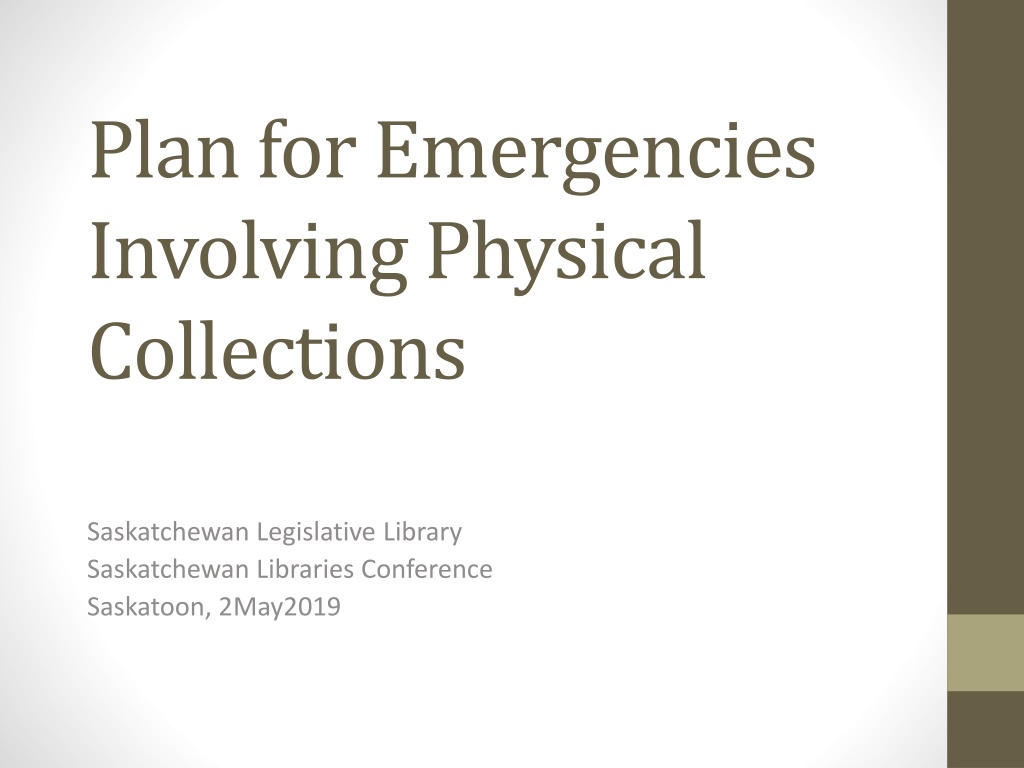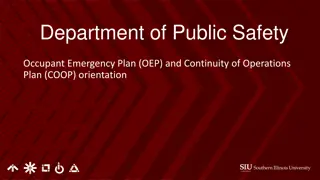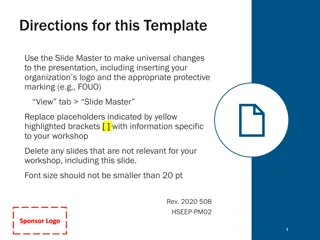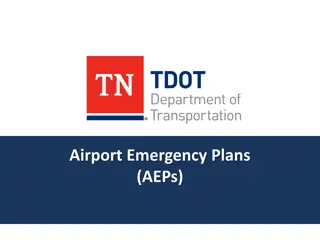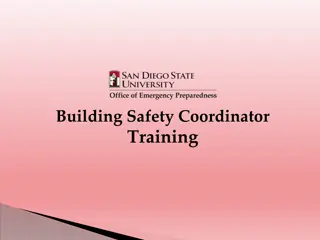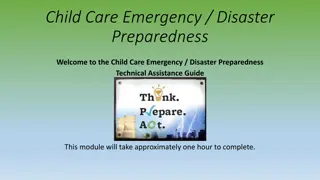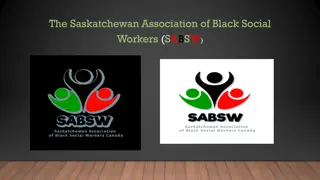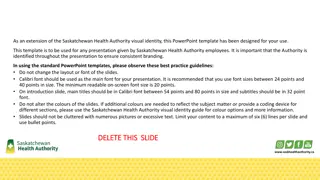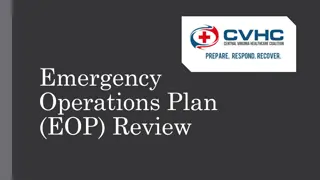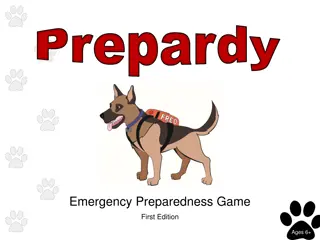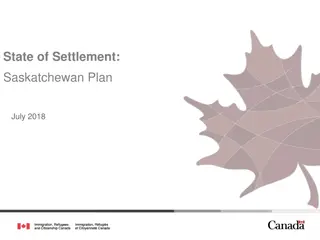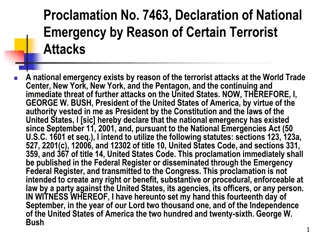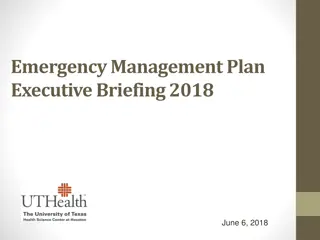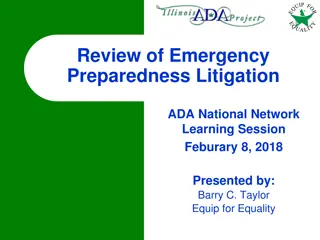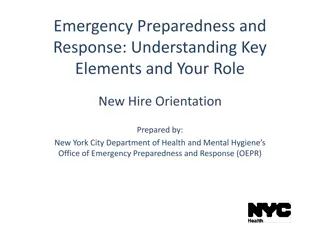Emergency Preparedness Plan for Saskatchewan Legislative Library
Enhance and revise emergency preparedness plan for the Saskatchewan Legislative Library by aligning with strategic priorities, enhancing response procedures, defining roles and responsibilities, and incorporating recognized standards. Training and research phases cover developing effective plans, risk assessment, prevention, response procedures, salvage techniques, and business resumption strategies. Workshops with experts provide valuable insights and tools for creating a robust emergency plan to safeguard physical collections.
Download Presentation

Please find below an Image/Link to download the presentation.
The content on the website is provided AS IS for your information and personal use only. It may not be sold, licensed, or shared on other websites without obtaining consent from the author. Download presentation by click this link. If you encounter any issues during the download, it is possible that the publisher has removed the file from their server.
E N D
Presentation Transcript
Plan for Emergencies Involving Physical Collections Saskatchewan Legislative Library Saskatchewan Libraries Conference Saskatoon, 2May2019
Presentation Overview Business Need Developing Our Plan Training and Research Phase Drafting Phase Our Plan Next Steps
Revising Our Emergency Plan: Business Need Identified as a high priority by library staff and in library strategic plan Business continuity planning aligns with our parent organization s strategic plan
Revising Our Emergency Plan: Business Need Enhancing existing plan with additional content on: Immediate response procedures Management and staff roles & responsibilities Decision-making structure Detailed instructions for hands-on tasks Recognized standards
Training and Research Phase Training with Jane Dalley - Dalley-Froggatt Heritage Conservation Services Emergency Management and Business Resumption Workshop - January 17th, 2018 What a good plan looks like How to develop a plan A Hands-on Collection Salvage Workshop - January 18th, 2018 Realistic, cost-effective salvage techniques Dealing with wet materials
Training and Research Phase Developing a Plan Workshop with Jane Dalley Elements of a Good Plan Risk Assessment Prevention & Mitigation(for later development) Response Salvage & Recovery Business Resumption Staff Training Incorporates known standards
Training and Research Phase Developing a Plan Workshop with Jane Dalley Useful Tools Plan types, templates, examples Risk assessment matrix Sample hazard list Situation assessment form Emergency response teams Five types of staff training Response planning chart-provides structure for recording, preparing a response including tasks, number of artifacts, supplies & equipment needed, space needed, people and expertise required
Training and Research Phase Research material: Cleaning & salvage techniques gave us concrete examples Canadian Standards Association standard we ordered this for our collection Professional practices we have a better sense of whom we can consult Wet collections response flowchart provides a decision- making tree for team leaders and staff
Training and Research Phase Research material: Drying techniques comparison gave staff understanding of choices Risk level various media helped develop triage readiness Water health hazards staff safety during an emergency needs special consideration and preparation Pocket salvage guide this could be laminated and given to team leaders in advance; it is a great one-sheet summary
Training and Research Phase Research material: Mould response guide a succinct immediate response Useful things in local stores this was fun, practical Canada Council of Archives salvage guide for water damage a 29 page how to for all formats Emergency Supplies & Services a detailed equipment list and vendor list template
Training and Research Phase Collection Salvage with Jane Dalley Handling/Stabilization for Packout & Salvage Recovering Water Damaged items Working with different formats Gave each staff member experience handling wet items Practiced drying methods
Training and Research Phase What we learned from collection salvage training A lot of space is required to air dry material Advance research/arrangements for suitable space and equipment needed Handling wet material is labour-intensive and time-consuming Effective low-cost supplies are readily available in any hardware store Wet items need attention within 48 hours Freezing wet materials can buy time
Developing Our Plan: Drafting Phase One year project Team of four By-weekly meetings Started with Risk Assessments
Drafting Phase Risk Assessment This first step is indicated by the Jane Dalley workshops. Plan Writing Team shortlists risks according to likelihood and impact of each risk. We identified 43 unique risks in 13 categories. Narrowed down to 11 risks.
Eleven Key Risks Earthquake Fire & Smoke Mould after Water Mould without Water Staff Disruption Theft Tornado Utility Failure Vandalism Vermin Water
Drafting Phase Immediate Response Based on Risk Assessment, an immediate response plan is scripted Actions on fire, flood, carpenter ants discovered First minute, hour, especially first 48 hours Expect interaction with external authorities and officials Risks vary by room; responses likewise Risks merged into each other: fire, smoke, water
Drafting Phase Realistic Solutions A good plan cannot anticipate all situations. Match likely risks with likely responses. Provide a toolbox of good responses from which to choose. Provide a structured way to make decisions, marshal resources. Pre-position supplies, equipment. Conduct advance liaison.
Our Plan safety first risk assessments for collection spaces only 32 pages defines roles and responsibilities
Our Plan Four Sections Discovery and Response Recovery Documentation & Debriefing Appendices with detailed information
Nine Common Steps in a Standard Response for Every Disaster Scenario 1. 2. 3. 4. 5. 6. 7. 8. 9. Discovery Scene Assessment Engage Team Lead Situation Report Inform Librarian Response Recovery Incident Report Debriefing
Team Lead Provides direction & support Channels communication Coordinates efforts Documents incident Conducts debriefing
Empowerment At discovery all staff can respond All staff have access to the Plan Appendices provide support Everyone contributes to Debriefing Everyone helps refine the Plan
Collection Material Triage Plan identifies priority collections Priority collections provides guidance for triaging material when necessary Collection priorities are drawn from the Library s mandate and its collection and preservation policies
Appendices Book Repair Manual Floor Plans, Risk Assessments Resource list with detailing guidance and procedures Policies, Contacts, Supplies Previous Incidents
Incident Report What, where, when, why, who Includes point from Debriefing Written by the Team Lead Is referenced in the Plan
Debriefing What went well, points to improve Hears from all staff involved Conducted by the Team Lead Is referenced in the Plan Strengthens future responses
Next Steps Present Plan to Staff The Project Team presents Plan to rest of staff Acquire & Install Supplies & Equipment As determined by Plan and supporting documents, training Training Scenarios & Rehearsals Tabletop/Sandbox exercise or hands-on scenarios External Liaison With facilities staff, security, emergency personnel Renewal and Revision Management responsibility to ensure rehearsals, review, revision occur
Next Steps Rehearsals Scenario-based training. Rehearsals will foster plan revision and improvement. Practice will help work out bugs in communication, decision- making, and improve the speed of response. Rehearsals afford what-if experimentation: what if key decision-makers named in the plan are not available during a crisis?
GC Salmers Director of Support Services Saskatchewan Legislative Library 211-3085 Albert St. Regina, SK S4S 0B1 1-306-787-2278 gsalmers@legassembly.sk.ca http://www.legassembly.sk.ca/library/
